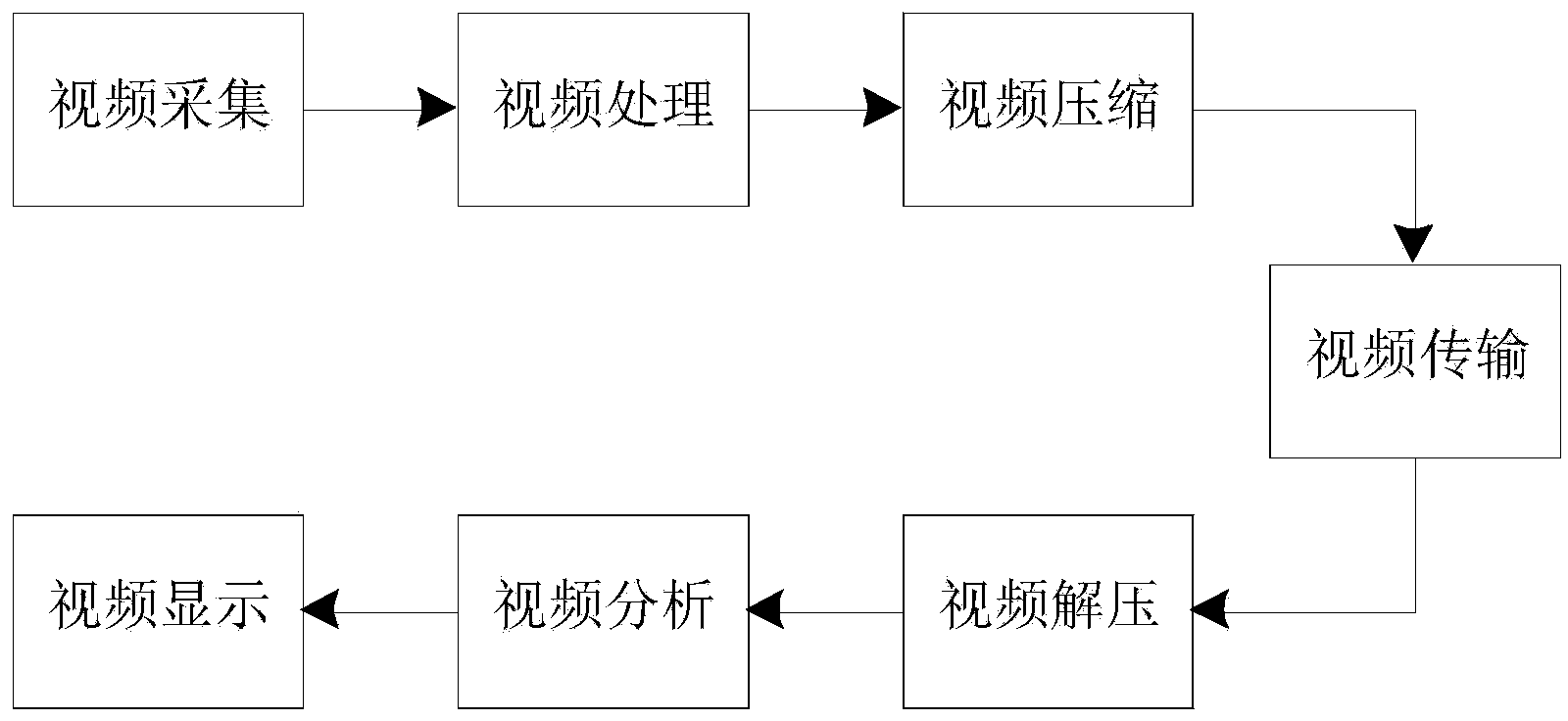Layered representation-based unmanned plane video adaptive transmission method
A self-adaptive transmission and machine video technology, applied in the field of video transmission, can solve problems such as limited bandwidth, incompatibility between compression performance and computational complexity, complex applications, etc., to reduce compression time, avoid data loss and congestion, and facilitate The effect of operating the interface
- Summary
- Abstract
- Description
- Claims
- Application Information
AI Technical Summary
Problems solved by technology
Method used
Image
Examples
Embodiment 1
[0095] Such as Figure 12 As shown, in the case of long range and high flight altitude of UAV, the transmission bandwidth is narrow and the delay is large. The traditional video compression standard algorithm cannot provide video images with acceptable subjective quality. Increase the delay further. In this case, an extreme example of this scheme can be used, that is, only the background layer is coded and transmitted. This layer uses image splicing to splice all the images in an image group into a panoramic background image, and then compresses it by static image coding. The background layer can also be divided into k (k≥1) with different compression effects sublayer.
[0096] The specific implementation steps are as follows (assuming that an image group is composed of N frames):
[0097] Step 1) Reference image selection: The reference image is the first processed image in the stitching process, and the subsequent images are projected to the coordinate system of the image a...
Embodiment 2
[0106] When the flying height of the UAV is low, there are clear independent moving targets in the captured video, and only using image stitching method for compression cannot truly reflect the characteristics of independent moving targets in the video, and it may be due to the location of the moving target. Varying occlusion of the background causes irrecoverable pixel loss in the stitched image. At this time, the scheme of combining the background layer and the target layer can be used to express and compress the video content. Such as Figure 12 As shown, the moving target is separated from the background, only the background image is spliced to form a background layer, and the moving target is expressed and compressed separately.
[0107] The specific implementation steps are as follows:
[0108] Step 1) Segmentation of moving objects: Since there is movement in the background of drone video aerial photography, it is necessary to analyze the entire sports field to dist...
Embodiment 3
[0113] Due to the existence of calculation errors, both background stitching and target tracking may cause deviations in the actual position information, resulting in irreparable distortion in the reconstructed video. In practical applications, there are also applications that require higher accuracy. If the transmission bandwidth or storage device permits, a more complex form of compression can be used. At this time, a solution combining the background layer, the target layer and the enhancement layer may be used to express and compress the video content. Such as Figure 4 As shown, the enhancement layer directly performs predictive coding on the video frame, and can generate different quality layers according to actual conditions. In this embodiment, the target layer is optional, and the actual combination may be background layer+target layer+enhancement layer; or background layer+enhancement layer. The enhancement layer can use the information of the background layer and...
PUM
 Login to View More
Login to View More Abstract
Description
Claims
Application Information
 Login to View More
Login to View More - R&D
- Intellectual Property
- Life Sciences
- Materials
- Tech Scout
- Unparalleled Data Quality
- Higher Quality Content
- 60% Fewer Hallucinations
Browse by: Latest US Patents, China's latest patents, Technical Efficacy Thesaurus, Application Domain, Technology Topic, Popular Technical Reports.
© 2025 PatSnap. All rights reserved.Legal|Privacy policy|Modern Slavery Act Transparency Statement|Sitemap|About US| Contact US: help@patsnap.com



